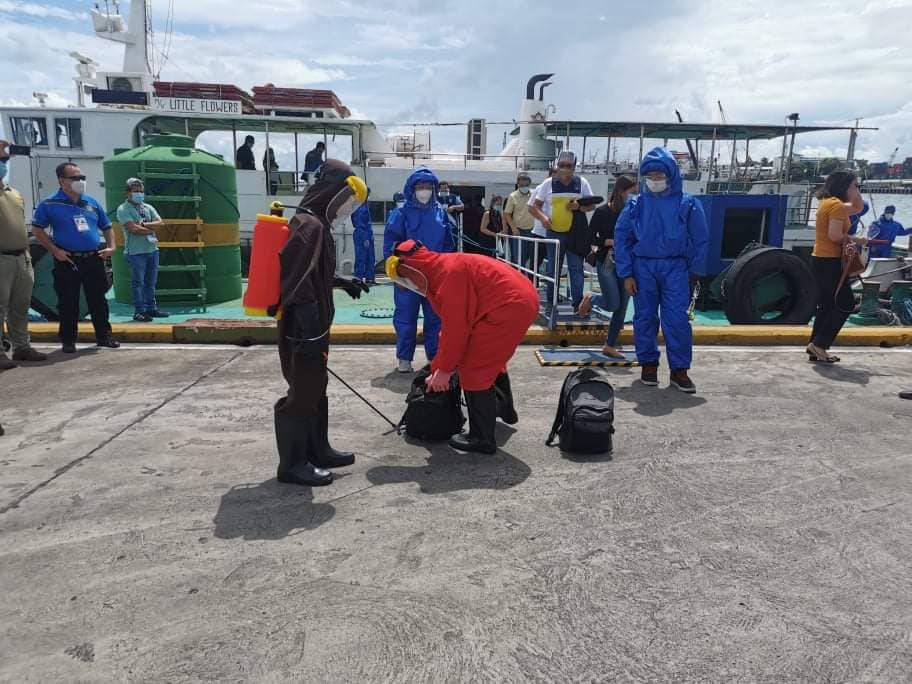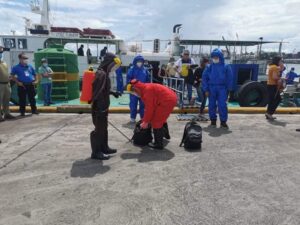

The Port of Cebu was activated on October 16 as the Philippines’ fourth crew change hub for seafarers, according to the Department of Transportation (DOTr).
It joins other crew change hubs Port of Manila, Port of Capinpin in Bataan, and Subic Port in Zambales.
The Port of Cebu’s activation came after the crew change protocol was approved among the Inter-Agency Task Force (IATF) for Crew Change, Regional Task Force Central Visayas, and the Cebu provincial and local government units following several consultative meetings, DOTr assistant secretary for maritime Narciso Vingson, Jr. said.
The Cebu provincial government confirmed the activation through Executive Order No. 27 issued on October 14.
“Cebu is a strategic location for crew change, as it is at the heart of the Visayas. With the approval of the Port of Cebu as a crew change hub, the port can begin to facilitate the process for arriving and departing seafarers coming to and from the Visayas,” Vingson said in a statement.
Office for Transportation Security and One-Stop Shop (OSS) head Raul Del Rosario said an OSS facility—headed by the Cebu Port Authority (CPA)—has been organized at Cebu port “so that seafarers can undergo a smooth flow of processing, especially in terms of ensuring their health.”
CPA general manager Leonilo Miole said: “This is a milestone not just for the Port of Cebu, our maritime partners, and our seafarers, but also for Cebu, in general, as this is also seen to generate economic activities and revenues.”
The crew change hub at Cebu port will serve Filipino seafarers joining a ship docked in the Philippines bound for overseas (outbound); Filipino seafarers leaving a ship (inbound); foreign seafarers from an airport joining a ship docked at the port (airport to ship); and foreign seafarers leaving a ship docked in the port to an airport (ship to airport).
Miole assured the public that safety protocols are already in place to avoid any possible transmission of the coronavirus disease (COVID-19) during crew change operations.
Based on the crew change protocol approved by DOTr and IATF, all arriving vessels at Cebu port will be anchored at the designated anchorage or docking site authorized by CPA and the Philippine Coast Guard.
Disembarking seafarers must observe health and safety protocols such as disinfection, handwashing, social distancing, and wearing of full personal protective equipment—face mask, face shield, gloves and hazmat suit.
On arrival at Cebu port’s OSS facility, seafarers must then immediately proceed to the registration booth for mandatory swab testing.
After completing the OSS procedures, seafarers must immediately board their assigned vehicles to take them to their designated Bureau of Quarantine-approved quarantine facilities, where they will wait for their swab test results. The Overseas Workers Welfare Administration will be responsible for the quarantine facility accommodations of the waiting seafarers.
For embarking vessel crew members, only seafarers with negative COVID-19 test results and a Certification of Containment will be allowed to board vessels. All embarking crew members must also observe health and safety protocols.
The creation of crew change hubs is part of a project seeking to facilitate the speedy and safe travel of seafarers and change of crew during the COVID-19 pandemic.
The Philippines is one of 13 countries which earlier committed to the International Maritime Organization (IMO) to facilitate crew changes and achieve key worker designation for seafarers.
IMO had noted that this commitment “represents significant progress to help resolve a growing crisis facing the maritime industry, and enable hundreds of thousands of stranded seafarers to go home or join ships.”
The ports in Batangas and Davao, meanwhile, are waiting for their respective crew change hubs to be activated as well.




